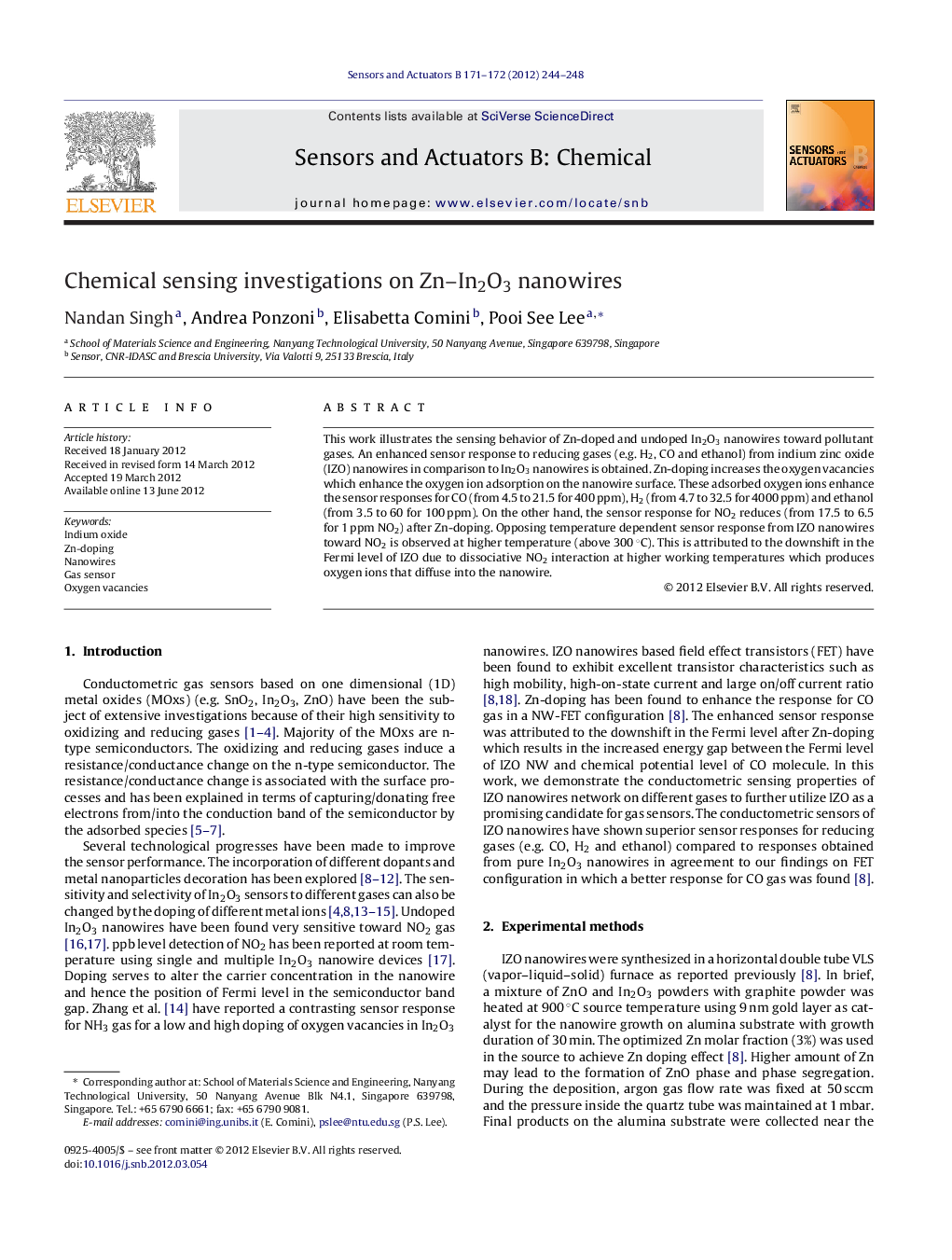| Article ID | Journal | Published Year | Pages | File Type |
|---|---|---|---|---|
| 745463 | Sensors and Actuators B: Chemical | 2012 | 5 Pages |
This work illustrates the sensing behavior of Zn-doped and undoped In2O3 nanowires toward pollutant gases. An enhanced sensor response to reducing gases (e.g. H2, CO and ethanol) from indium zinc oxide (IZO) nanowires in comparison to In2O3 nanowires is obtained. Zn-doping increases the oxygen vacancies which enhance the oxygen ion adsorption on the nanowire surface. These adsorbed oxygen ions enhance the sensor responses for CO (from 4.5 to 21.5 for 400 ppm), H2 (from 4.7 to 32.5 for 4000 ppm) and ethanol (from 3.5 to 60 for 100 ppm). On the other hand, the sensor response for NO2 reduces (from 17.5 to 6.5 for 1 ppm NO2) after Zn-doping. Opposing temperature dependent sensor response from IZO nanowires toward NO2 is observed at higher temperature (above 300 °C). This is attributed to the downshift in the Fermi level of IZO due to dissociative NO2 interaction at higher working temperatures which produces oxygen ions that diffuse into the nanowire.
Graphical abstractFigure optionsDownload full-size imageDownload as PowerPoint slide
